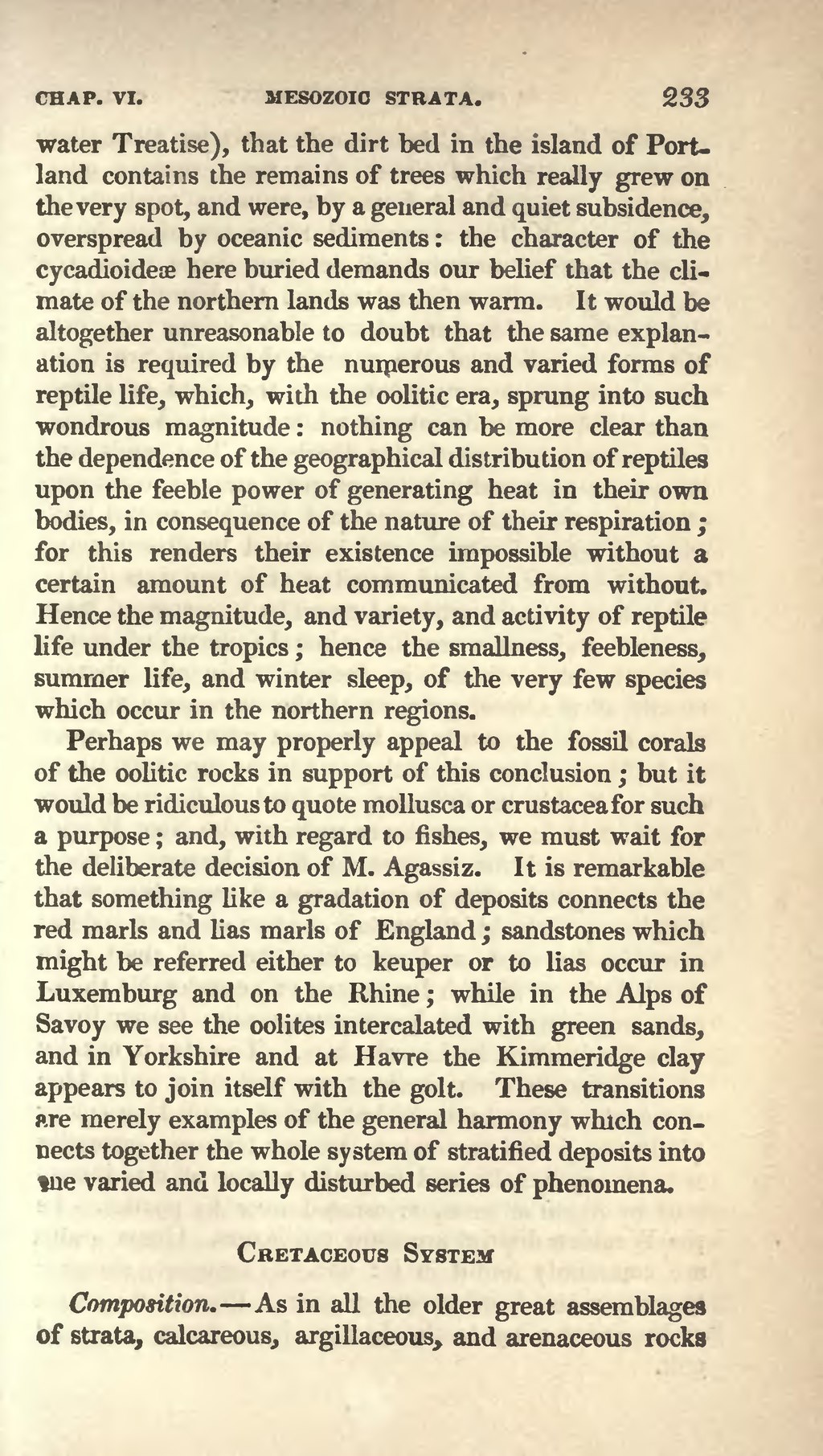water Treatise), that the dirt bed in the island of Portland contains the remains of trees which really grew on the very spot, and were, by a general and quiet subsidence, overspread by oceanic sediments: the character of the cycadioideæ here buried demands our belief that the climate of the northern lands was then warm. It would be altogether unreasonable to doubt that the same explanation is required by the numerous and varied forms of reptile life, which, with the oolitic era, sprung into such wondrous magnitude: nothing can be more clear than the dependence of the geographical distribution of reptiles upon the feeble power of generating heat in their own bodies, in consequence of the nature of their respiration; for this renders their existence impossible without a certain amount of heat communicated from without. Hence the magnitude, and variety, and activity of reptile life under the tropics; hence the smallness, feebleness, summer life, and winter sleep, of the very few species which occur in the northern regions.
Perhaps we may properly appeal to the fossil corals of the oolitic rocks in support of this conclusion; but it would be ridiculous to quote mollusca or Crustacea for such a purpose; and, with regard to fishes, we must wait for the deliberate decision of M. Agassiz. It is remarkable that something like a gradation of deposits connects the red marls and lias marls of England; sandstones which might be referred either to keuper or to lias occur in Luxemburg and on the Rhine; while in the Alps of Savoy we see the oolites intercalated with green sands, and in Yorkshire and at Havre the Kimmeridge clay appears to join itself with the golt. These transitions are merely examples of the general harmony which connects together the whole system of stratified deposits into Vie varied and locally disturbed series of phenomena.
Cretacous System
Composition.—As in all the older great assemblages
of strata, calcareous, argillaceous, and arenaceous rocks
